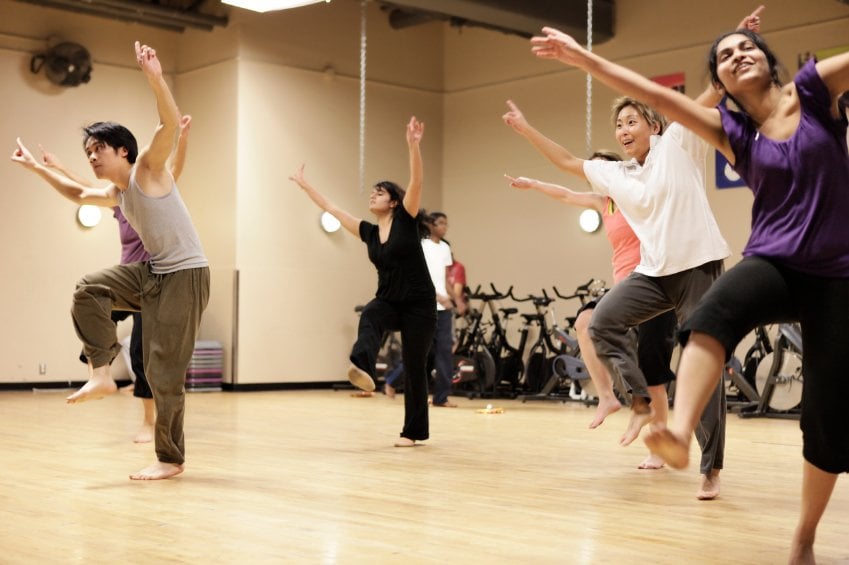
We don’t have to wait for a time machine to travel into the future or past. We already have one inside our skull. The mind transports us backward and forward in time and to places other than where we are with such abandon, we all have millions of frequent flyer miles racked up in internal jet-setting.
All the travel makes for lots of split-tense headaches and fractured attention. It’s responsible for one of the most popular aspirations of working people everywhere these days. I asked the audience at a keynote I did recently for the Arizona Council’s Thriving in Times of Change conference what work-life balance means to them, and a woman answered: “When I’m at home, I’m not thinking about work, and when I’m at work, I’m one hundred percent at work.”
AVOIDING THE WORK-HOME GUILT CYCLE
Great answer. We have to be fully present to our life at any given moment to truly experience it. This is when we are the most absorbed in the experience, connected to others, most in control, less stressed, the more we like what we’re doing, and feel a lot less guilt. And obviously, the only tense in which we can experience happiness, or anything else for that matter, is the one we are in now.
Guilt drives the dislocation experience that undercuts work-life balance, making us feel guilty when we’re at home and there's work to do/think about and when at work, there are people/responsibilities at home to whom/which we're not giving enough attention.
Especially in the era of nattering devices, there are a lot of good reasons we need to be able to detach ourselves from time traveling thoughts that intrude into whatever we are doing, work or home. First of all, guilt drives stress. Ruminative thoughts of needing to be where you aren’t self-inflict anxiety and interruptions that make anything we do seem more aggravating than it is, say researchers.
Beyond that, Roy Baumeister and colleagues at Florida State University found that when we have thoughts of things still left to do orbiting our brains, they butt into the task we’re on, making it more difficult to complete the task. One eye on another time and place hinders any task performance by driving stress about the undone items and making it take more effort to do the thing in front of us.
Given that all of us have more work to do than we can complete by day's end, it’s easy to lapse into guilt mode when leaving for the day. It can make us try to catch up on more work emails at home. It’s very tempting, since the brain hates unfinished loops, and nags us when there are tasks undone.
GETTING MENTAL SEPARATION
How to stop thinking about work has a lot to do with something that has gone the way of the dodo: boundaries. In an unbounded world, we have to proactively set perimeters, or we can never get the mental separation from work thoughts that lets us enjoy time off-the-clock with friends and family, hobbies, or interests.
In a Harvard study (Nash, Stevenson), the key trait of professionals who had true satisfaction in their lives was found to be “the deliberate imposition of limits.” They were able to get to the “just enough” point in a given day or on a given project and didn’t have to overdo it.
Another big factor in exiting the present is ever-shrinking attention spans. Attention is a function of self-regulation, another kind of boundary—the discipline and will power to concentrate on one thing at a time.
The more interruptions you have, the more impulse control is eroded, as the intrusions shred the effortful control mechanism of your executive attention function that gives you the power to self-regulate.
The more you check email, the more you have to check it. The harder it is to regulate impulsivity, the more you self-distract and flit from one thing to another. Your attention span shrinks and the mind devolves to the focus of a frantic flea.
THE ANXIOUS SPECIES
Being fully at home when you are not at work and engaged in the moment of the task in front of you when you’re at work requires two main things, the ability to be absorbed in the mental and physical engagement of now, and secondly, being able to reduce the yammering that comes from your survival equipment and the self-referential part of the brain that’s always asking: What’s going to happen? How am I going to make it? What’s wrong? What do I have to do at home/at work?
Our species should be called homo worrywart, since the default is to the negative and time travel to thoughts about what could go wrong. This has insured our survival over the millennia while saddling minds with endless departures from the present to projected anxieties and concerns.
The good news is that we can corral errant attention and keep the self-referential default under control, if we can create perimeters around work and life and manage the thoughts in our head. We can control the frenzied mind and its constant departures to angsty realms too well-known by learning how to not engage with the stuff in the other tenses. Here are some ways to do that:
6 WAYS TO BE WHERE YOU ARE
1. Set boundaries. Set a stop time that tells you the workday is over. What will your stop time be? 6 p.m.? 7 p.m.? Set the alarm on your phone. After this time, you won’t check work email and will be available to interests and people on the home front.
2. Create a buffer zone after work to transition to the life side, something that brings the pressure down and the patience up. You can read, listen to music, do yoga something that adjusts the pulse rate downward.
3. Activate work recovery strategies. The science of work recovery says we have to detach ourselves from work thoughts and the stress that comes with them, or they come back to work with us the next day. You can do that through relaxation, recreation, or mastery activities, such as hobbies that allow you to increase your skill at some activity. The latter is the most effective at reducing stress, since it builds esteem and confidence that make us feel good and crowd out the negative.
4. Choose intrinsic goals. Don’t look for an external payoff. Do whatever you are doing for the fun, enjoyment, excellence, service, learning, for the inherent interest of whatever you’re doing. That roots you in the present. Research shows that we act for no payoff, we get one internally, in the form of full engagement in the moment that satisfies core needs such as autonomy and competence.
5. Don’t engage with the time traveling thoughts in your brain. Just because the thought or belief is in your brain doesn’t mean you have to engage with it or even believe it. Not grabbing false beliefs is one of the keys to managing stress and your mind. Notice the thought and come back to the present.
6. Do the best thing you can do to both increase attention and reduce the self-referential rabble in your brain—meditate. The science shows that meditation, whatever form you use, from mindfulness to the relaxation response, builds attention and calms the worrywart. There is nothing better for cutting out obsessive thinking and rumination and getting you used to just observing thoughts and not having to grab them and get swept down the projection track.
Yes, there is a lot of overlap and intermingling between work and home these days, thanks to technology and our super-busy lives. Yes, it’s not always possible to get the separation we need, but the goal isn’t perfection. It’s creating enough discrete space to experience work and home life as separate affairs during the week that we feel available to our lives and others outside the office and have the ability to participate in that life to the point where we don’t feel resentment about life missing in action.
One of the best things about sharpening the focus on every moment of our lives is that we remember what we do when we’re paying attention, as opposed to the non-imprint that happens when we’re blowing through to the next item on the list. Since your memory tells you whether you like your life or not, being where you are is a kind of insurance policy that you have the kind of memories that tell you life is more than work and errands and utilitarian tasks. Your memory proves it to you.
If you would like to learn more about how my work-life balance and stress management training programs can help your team or organization work smarter and live better, click the button below for details.


























